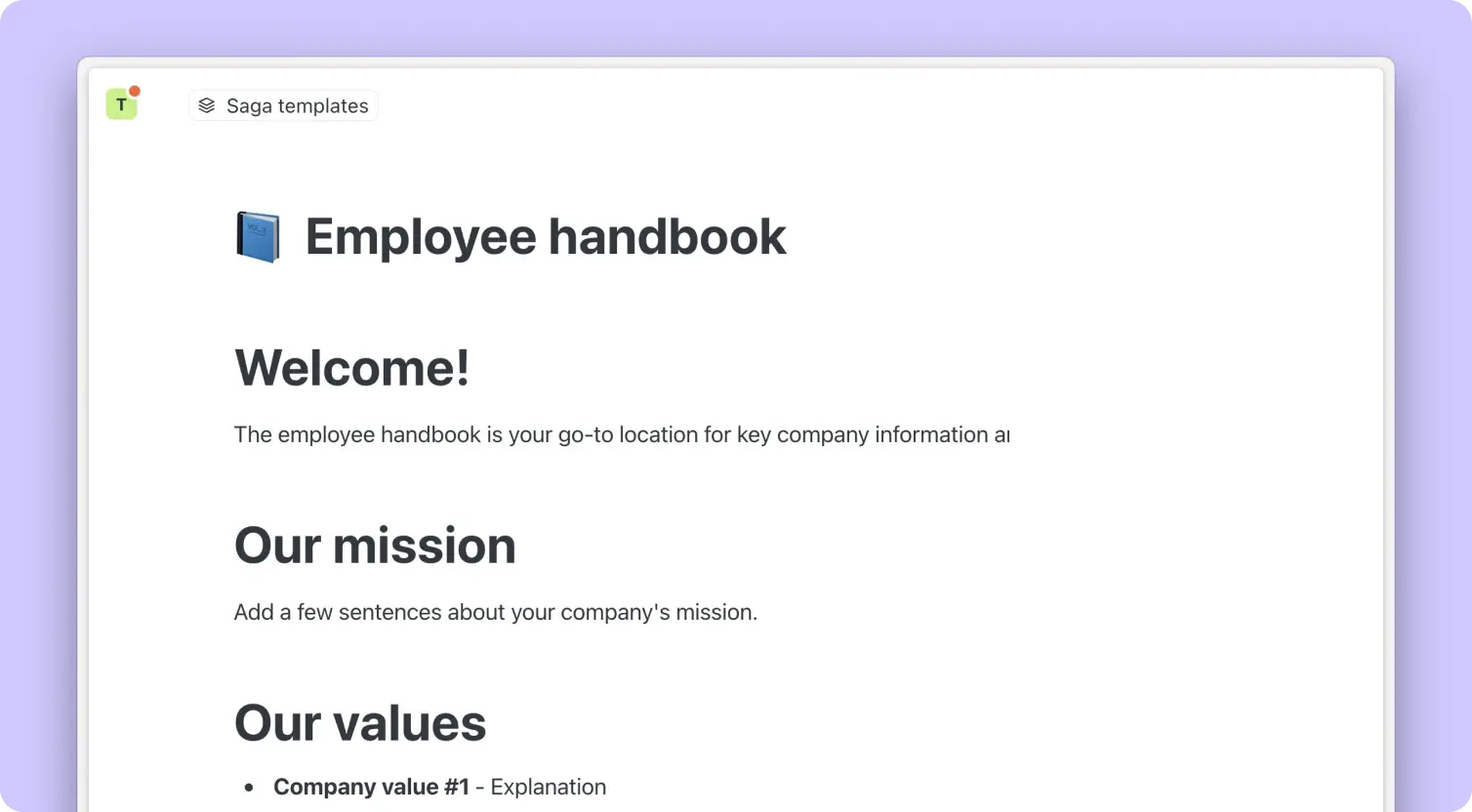Employee handbook

What is an employee handbook?
An employee handbook is a comprehensive document that outlines a company’s mission, values, policies, and procedures. It serves as a guide for employees, providing them with essential information about working conditions, company culture, legal obligations, and employee rights.
Unlike a simple document of rules, an employee handbook is a dynamic resource that helps to set expectations and foster a positive work environment. It enables employees to understand their roles and responsibilities, as well as the company’s commitments to them.
Employee handbooks are designed to be clear, concise, and accessible, ensuring that employees can easily refer to it whenever they have questions about their employment or company policies. This document is crucial for both new hires and existing employees, acting as a reference point for company standards and practices.
Benefits of an employee handbook
Creating an employee handbook offers several benefits, both for the organization and its employees. It establishes clear expectations, which can reduce misunderstandings and improve employee alignment. By outlining what is expected from employees and what they can expect from the company, it fosters a transparent and trusting work environment.
Additionally, an employee handbook is a vital tool for onboarding new team members. It helps them to quickly understand the company’s culture and policies, accelerating their integration into the team and increasing their productivity.
From a legal perspective, a well-crafted employee handbook can also serve as a protective measure for the company. It can provide documentation that employees have been informed of company policies and legal obligations, which can be crucial in resolving disputes or defending against employment claims.
Finally, an employee handbook reinforces the company’s culture and values, promoting a sense of unity and purpose among team members. It can be a powerful tool for building a positive workplace culture and engaging employees in the company’s mission.
How to create an employee handbook?
Creating an employee handbook is a critical step in setting up your team for success. Here is a step-by-step guide to help you develop a comprehensive and effective handbook for your organization.
1. Gather essential information
Start by collecting all relevant information that should be included in the handbook. This includes your company’s mission statement, values, policies, procedures, and any legal requirements specific to your industry or jurisdiction. Consult with different departments to ensure all critical areas are covered.
2. Define your company culture and values
Clearly articulate your company culture and values. This section sets the tone for the entire handbook and helps new hires understand what makes your organization unique. Include your vision for the company’s future and how employees contribute to achieving this vision.
3. Include employment information
Provide a comprehensive overview of employment information, such as job classifications, work hours, payroll, leave policies, and benefits. This section should answer most of the logistical questions employees might have about their employment.
4. Outline HR policies and procedures
Detail your company’s human resources policies and procedures, including code of conduct, attendance and holiday policy, recruitement and performance reviews, etc. Be clear and concise to avoid misunderstandings. You can use Saga AI to get feedback and improve overall clarity in seconds.
It’s also important to cover legal obligations, such as equal employment opportunity, anti-harassment policies, and safety regulations.
5. Review and update regularly
Once your handbook is drafted, review it with legal counsel to ensure compliance with local, state, and federal laws. After finalizing, communicate the handbook to your team and make it accessible for future reference. Remember to review and update the handbook regularly to reflect changes in policies, procedures, or legal requirements.
6. Engage employees in the process
Involve employees in the creation process by seeking their feedback on the draft. This can help identify gaps, improve clarity, and ensure the handbook is comprehensive and understandable. Engaging employees also helps in building a culture of transparency and inclusivity.
By following these steps, you can create an employee handbook that not only complies with legal standards but also supports your company’s culture and values, making it an invaluable resource for your team.
Free template for employee handbook
To help you create an effective employee handbook, we offer a free template that is customizable to fit your organization’s unique needs. This template provides a solid foundation for communicating your company’s policies, culture, and expectations to your team members.
Get started
Then click on "Copy Page" to duplicate it in your workspace.